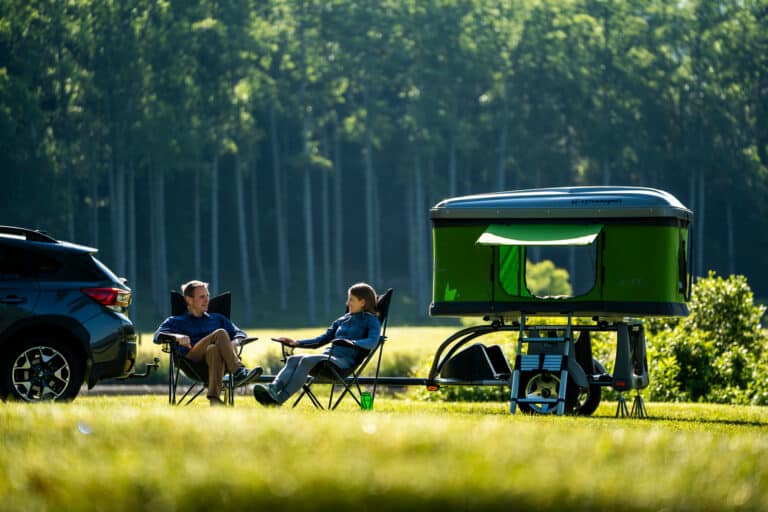47% No
Commuting by bicycle is not dangerous and should be nurtured and supported to get our society away from automobile commuting. There are too many cars, too little space, and too many distracted drivers. Commuting by bicycle is safe as long as the cyclist sees themselves as a vehicle without a motor, rather than a pedestrian on wheels. Cyclists need to have plenty of lights for nighttime riding, and a mirror for riding anytime. Cyclists need to obey the same traffic rules and regulations as others. Brief courses on how to commute safely would be a confidence booster for many.
—George Simmons, via e-mail

The dangers in cyclo-commuting cannot be ignored. But hopping in the car is statistically more dangerous than riding a bike. Many more commuters die or are injured in automobiles than on bikes each year. One way in which the danger of cyclo-commuting can be lessened is simply by getting more people to commute by bike. The more people who bike, the more motorists will see us, not to mention that more local governing bodies will see us and so provide a better cycling infrastructure. When only two people use a single little bike lane, those in charge see no reason to build more cycling infrastructure.
—Josh Lewis, via e-mail
My experience has been that car drivers are generally more afraid of cyclists than the reverse. They’re not quite sure how to maneuver around cyclists and often provide more room than strictly necessary when passing. So long as cyclists behave predictably—in other words, like vehicles obeying all traffic laws—then there is nothing much to worry about. We should also turn this question around a bit: Does designing roads for car-centric transportation make other modes more dangerous and difficult? We have created an inequitable transportation system that discourages the use of anything other than a car, even for short trips where driving doesn’t necessarily make more sense.
—Jeremy Holmes, Roanoke, Va.
I commute 13 miles to work every day all year. The morning ride is always in the dark. By wearing the proper attire and equipping my bike with lights and reflectors, I greatly reduce the probability of startling drivers and causing an accident. Cyclists must ride defensively and anticipate the worst case in each situation. I cannot tell you how many times I had the right-of-way but I was basically ignored. I was able to anticipate the possibility of the driver not acknowledging me, and this allowed me to reduce the chance of an accident.
—James Horchak, via e-mail
53% Yes
Sadly, it is for me. As a teacher, I travel in the dark and would have to take narrow, curvy roads with heavy traffic to get to my school. I am comfortable riding home in the afternoon, but trying to ride in the dark in early morning hours is too dangerous for me.
—Lynn Dieter, via e-mail
Commuting to work by bike in most of our region is not feasible unless you want to become a hood ornament on a big truck. The roads are just too narrow and there are too many blind curves. It would be nice to have bike paths on the sides of the road, but I don’t see this happening in my lifetime. I once had to slam on my brakes to miss a bike rider, who was in the middle of Route 58 in Virginia. I stopped to talk to him, and soon learned he was from England. I shared with him that his “I own the road philosophy” might get him sent home in a pine box. He thanked me and then started off on the wrong side of the road. Hope he made it.
—Ingles Alexander, Independence, Va.







